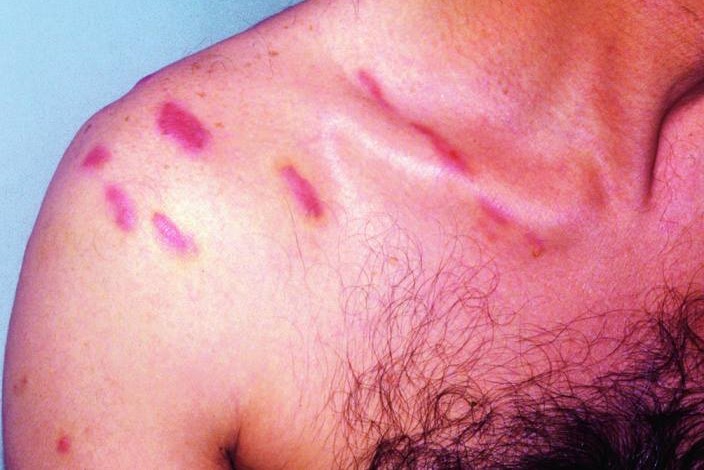
Tumours of endothelial tissues: Kaposi's Sarcoma
Kaposi’s sarcoma is a cancer that affects the endothelial tissues beneath the skin and mucous membranes, prevalent in immunocompromised individuals (especially those with AIDS)
Sarcoma first affects the skin and mucous membranes of the nose, anus and mouth, but can spread to the lungs, liver and other internal organs, with even fatal outcomes.
The causes of sarcoma are not known, but it is thought to be caused by a virus.
How it manifests itself
Sarcoma manifests itself as eruptions, sores and bumps on the face, nose, mouth, limbs and body.
These lesions are dark red or brown in colour and vary in size from a pinhead to a coin.
Depending on their location they can cause other complaints: pain and/or itching if they are on the skin; difficulty swallowing and eating if they are located on the mouth or in the oral cavity; coughing and breathing problems if they are on the lungs.
We can distinguish four forms of Kaposi’s sarcoma:
- the “classic” sarcoma: it is usually found in male subjects in old age (especially if of Mediterranean origin); it progresses slowly, usually over a period of 10-15 years, over time it spreads to other organs and facilitates the appearance of another neoplasm;
- sarcoma ‘related to immunosuppressive treatment’ is found in patients undergoing treatment with drugs that weaken the immune system, as in the case of organ transplant recipients;
- the ‘epidemic form’ affects AIDS patients; in them, sarcoma spreads more rapidly and is often found in different parts of the body;
- the ‘relapsing form’ recurs after treatment of the disease, either at the same site as the primary tumour or in another organ.
How it is treated
Kaposi’s Sarcoma can be cured in most cases by biological therapy (biotherapy or immunotherapy), which supports the body’s immune system in fighting the development of the cancer.
Chemotherapy and radiotherapy can also be used to treat Kaposi’s sarcoma
Cryotherapy is often used to ‘freeze’ and remove the sores, as an alternative to simple surgical removal.
The choice of therapy depends on the type of Kaposi’s sarcoma, as well as the age and general condition of the patient.
Read Also:
Emergency Live Even More…Live: Download The New Free App Of Your Newspaper For IOS And Android
HIV: Initial Symptoms In Women And Men
HIV: How Soon Do Symptoms Appear? The 4 Stages Of Infection
Sanofi Pasteur Study Shows Efficacy Of Co-Administration Of Covid And Influenza Vaccines
WHO: ‘Pandemic Will Continue Unless Vaccines Are Distributed To Poor Countries’
Covid And HIV: ‘Monoclonal Antibodies For The Cures Of The Future’
HIV, MRNA Vaccine Study By Iavi And Moderna
Kaposi’s Sarcoma: Discover What It Is


